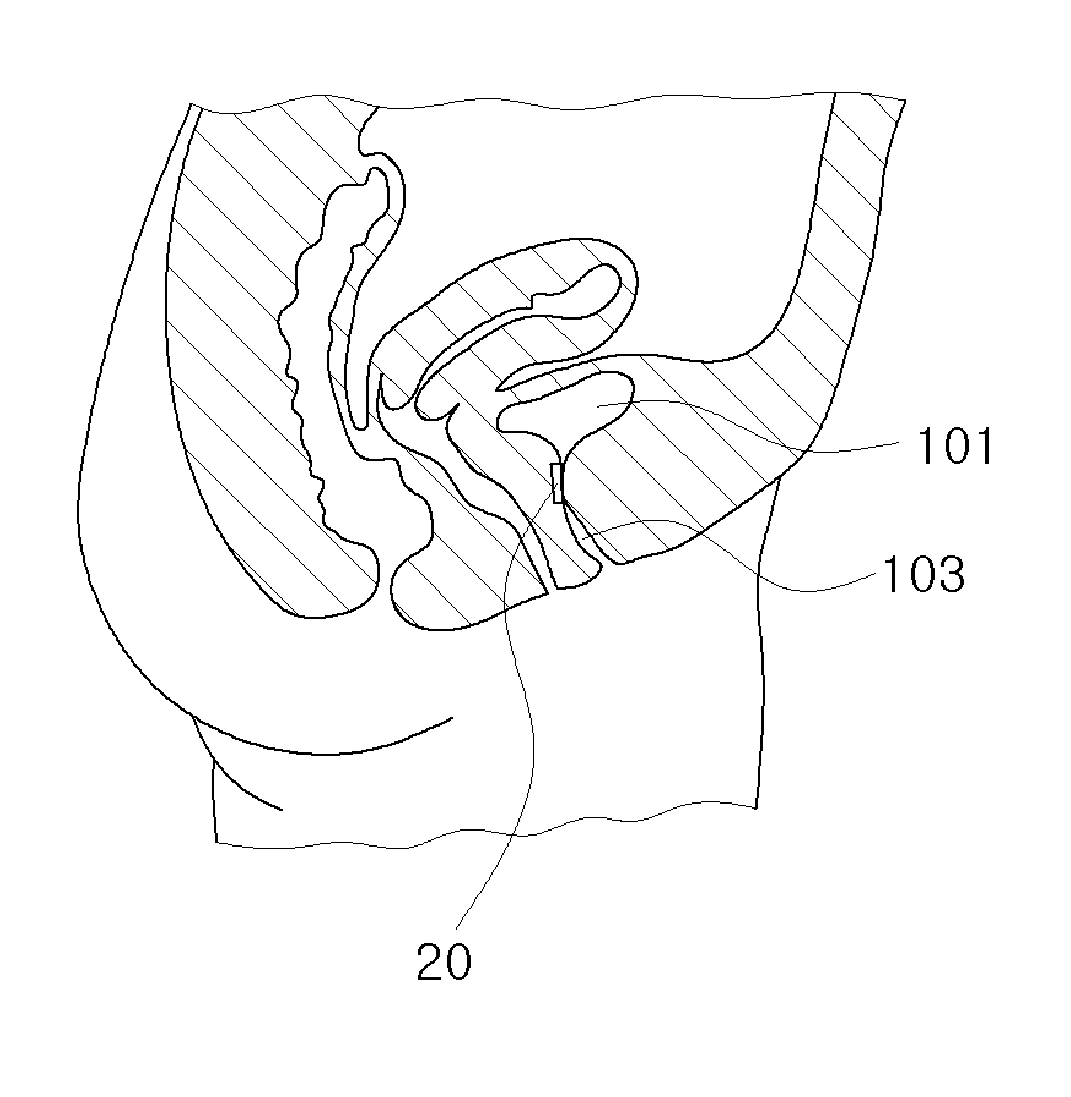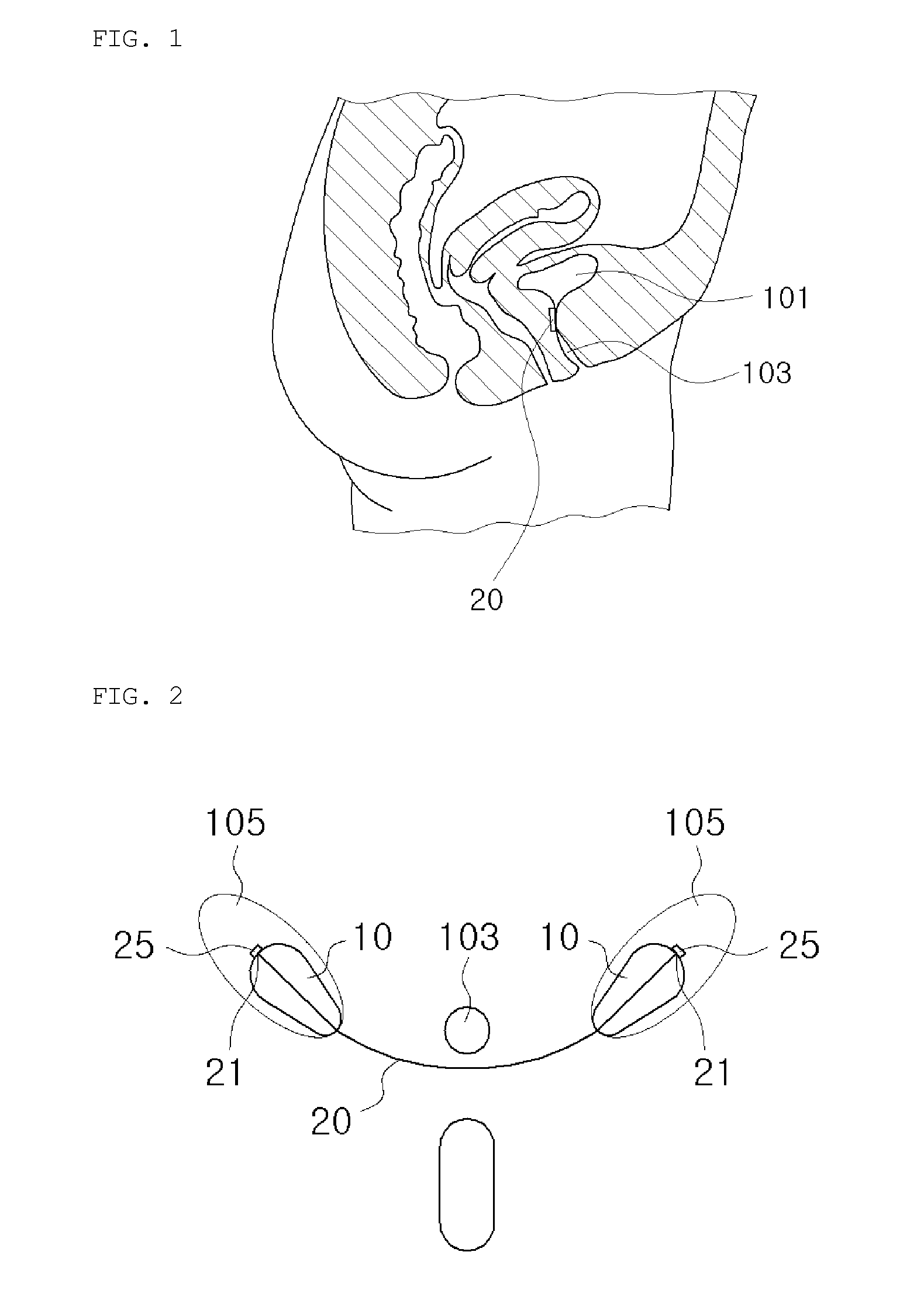Pressure-to-tension conversion device for treating urinary incontinence
a technology of urinary incontinence and conversion device, which is applied in the field of pressure-to-tension conversion device for treating urinary incontinence, can solve the problems of urinary incontinence, urinary incontinence symptom, damage to muscles, ligaments, blood vessels, etc., and achieves the effects of reducing damage, easy addition calibration, and minimal invasiveness
- Summary
- Abstract
- Description
- Claims
- Application Information
AI Technical Summary
Benefits of technology
Problems solved by technology
Method used
Image
Examples
first embodiment
[0024]FIGS. 1 and 2 show a pressure-to-tension conversion device for treating urinary incontinence in accordance with the present invention in the transplanted state;
[0025]FIG. 3 shows the pressure-to-tension conversion device in accordance with the first embodiment of the present invention while it is being used;
[0026]As shown in the drawings, the pressure-to-tension conversion device for treating urinary incontinence treatment includes first resilient sections 10. The first resilient sections 10 are deformed when pressure is applied to the sections, and are returned to their original shapes due to their own resiliency when the pressure is released from the section. In addition, the first resilient sections are highly malleable.
[0027]That is, each of the first resilient sections 10 may have a well-known soft silicon bag like construction, which is broadened thinly when it is compressed, and is returned to its original shape when the pressure is released.
[0028]The first resilient se...
second embodiment
[0036]FIG. 7 shows the pressure-to-tension conversion device according to the present invention in the used state.
[0037]As shown in the drawings, the pressure-to-tension conversion device according to the second embodiment of the present invention includes second resilient sections 210 and a second support 220, which correspond to the first resilient sections 10 and the first support 20, respectively, wherein the second resilient sections 210 and the second support 220 take a form of a bag filled with a fluid substance 230, so that if the second resilient sections 210 are deformed due to the abdominal pressure, the fluid substance 230 flows to the feature 221 of the second support 220 confronting the urethra 103, thereby expanding or inflating the feature 221. As a result, the second support 220 is tensioned and supports the urethra 103, whereby the urinary incontinence can be treated.
[0038]That is, the second resilient sections 210 may take a shape of a soft silicon bag, which is f...
PUM
 Login to View More
Login to View More Abstract
Description
Claims
Application Information
 Login to View More
Login to View More - R&D
- Intellectual Property
- Life Sciences
- Materials
- Tech Scout
- Unparalleled Data Quality
- Higher Quality Content
- 60% Fewer Hallucinations
Browse by: Latest US Patents, China's latest patents, Technical Efficacy Thesaurus, Application Domain, Technology Topic, Popular Technical Reports.
© 2025 PatSnap. All rights reserved.Legal|Privacy policy|Modern Slavery Act Transparency Statement|Sitemap|About US| Contact US: help@patsnap.com



